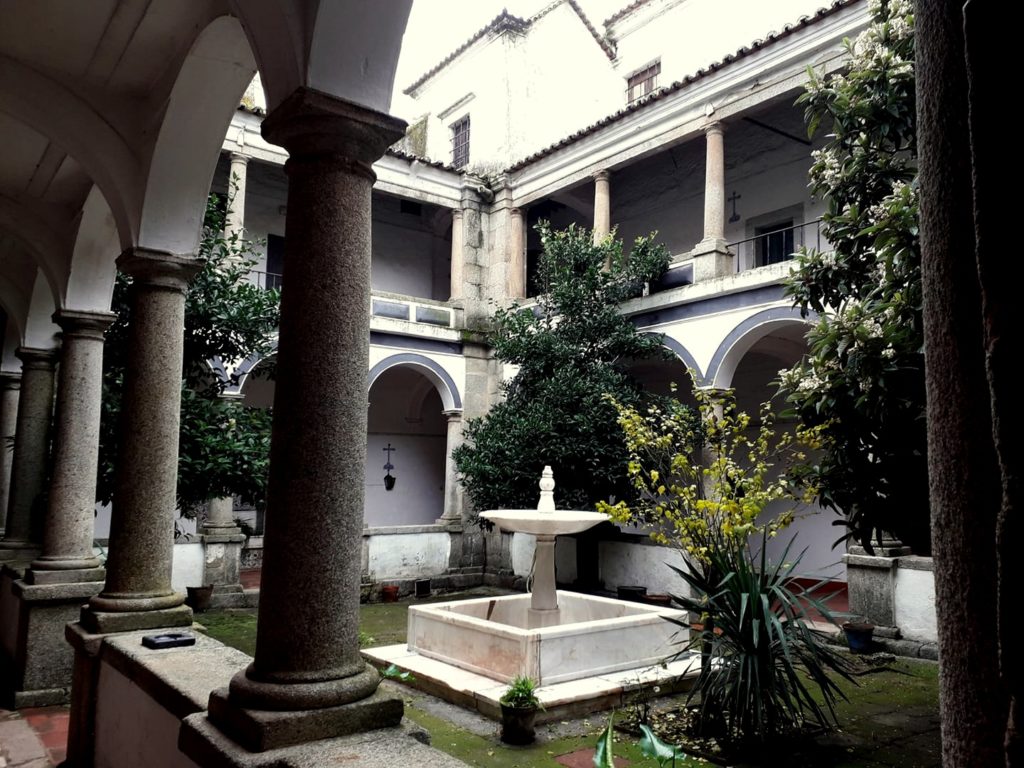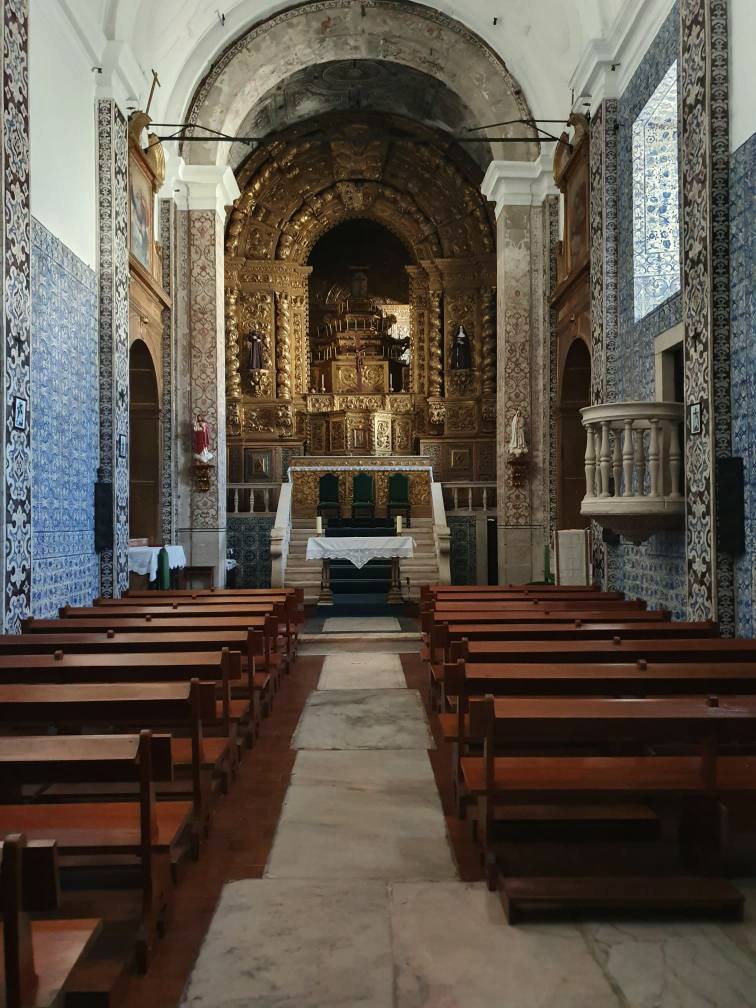The entries and visits of kings to the cities were always moments of grandeur, consisting in the perfect moments for the commission of artworks as well as social gatherings and much activity among the ruling classes of the cities and villages visited. To write about this would be too extensive for this kind of text so, in order to keep it in line with the purpose of these lines we will only focus on the visit of King Philip III to Évora in 1619 and, in particular his documented visit to the Convent of Calvário.
The arrival of King Philip III (of Spain, and II of Portugal) in Évora around the 14th of May of 1619 was announced in the city on the 5th of May during a period of intense rain. One of the most detailed accounts of the King’s visit to Évora was written by one of his chroniclers João Baptista Lavanha (Lavanha, 1622). In the chronicle of the journey of D. Filipe, Lavanha mentions that the King travelled from Estremoz (a village near Évora) to Évora on 14 May 1619 arriving during that day at the Convent of the Carmelite friars just outside the city walls (Lavanha, 1622: 4v). On the next day (15th) he made his entrance in the city through the Porta da Lagoa, the closest gate to the Carmelite convent. The gate was decorated with a large panel incorporating paintings of the so-called Martyrs of Évora, São Vicente and his sisters Sabina and Cristeta, as well as the bishop São Manços. The panel also included an allegorical figure representing the city of Évora holding the keys of the city gates in one hand, in a gesture as presenting them to the King, and on the other hand a branch of olive and vine representing the abundant production of these products. This figure was surrounded by a depiction of the Tagus River, and another of the Guadiana River which represented the importance of Évora as the larger city between both rivers (Lavanha, 1622: 5r). After passing by this arrangement the King received the city’s senate which kissed his hand and presented the keys of the city.
Although Lavanha did not mention the visit to the Convent of Calvário (he only mentions the Carmelite Convent and the Jesuit College), other sources refer the Calvário as one of the conventual houses the King visited during his stay in Évora (Silva, 1987: 284). Calvário was one of the three convents (the two others being the Dominican and the Franciscan) which the King visit on the Friday, 17 May (Silva, 1987: 284).
The Convent of Santa Helena do Monte Calvário had been founded by the Infant D. Maria of Portugal, through the intercession of her brother the Cardinal D. Henrique, archbishop of Évora, as a feminine convent of the Order of St Clare of the strict observance. Thus, the archbishop of Évora D. João de Melo ordered the foundation of a house of Capuchin Poor Clares in the place of the hermitage of Vera Cruz and the annexed houses where a Franciscan friar Fr. Domingos Donato was giving shelter and treating the city’s beggars (Fonseca, 1728: 395). In 1570 the archbishop donated the land for the construction and King D. Sebastião had already granted a supply of water from the aqueduct in previous years. The community began to occupy the new convent after 23 October 1574 and the founding nuns came from the Convent of Assunção of Faro (Fonseca, 1728: 395).

.The Jesuit chronicler Francisco da Fonseca described in detail the poor life the nuns lived in the Convent, noting the strict observance which they followed the hours of the Divine Office, praising their singing in the choir with several comparisons with the choir of the angels (Fonseca, 1728: 395-396).
Thus, the visit of King Philip III to the Convent of Calvário is reported in more detail than in the accounts of the chroniclers in a manuscript book compiled in the early eighteenth century as a memory of the religious community. The manuscript, titled Livro da comunidade deste Convento do Calvário, gathers a collection of accounts of important events (such as professions, and deaths) in the community’s life compiled in 1709. The Évora historian Túlio Espanca, who accessed this book in 1980 in an unidentified collector’s library, tells that it was sold together with several other documents from the convent’s library to private collectors soon after the convent extinction process which took place on 7 September 1889 following the death of its last abbess D. Maria José (Espanca, 1980-81: 142). In this way, much of what we know nowadays about the Livro da Comunidade is provided by Espanca’s 1980 article and his transcription of the entry regarding the King’s visit.

Espanca refers that the account of the visit of King Philip appears at the folios 24 to 25 of the manuscript. The King and his entourage entered the Convent on Friday the 17th May around four o’clock (which we assume was during the afternoon). By this time Soror Luísa da Cruz was the Convent’s abbess (Espanca, 1980-81: 143). She waited at the church with the holy cross, together with the remaining nuns of the convent ordered in the way of receiving a novice or in the profession ceremonies, each holding a lit candle (Espanca, 1980-81: 143).

When the entrance door was open for the King, two of the nuns intonated the hymn Te Deum laudamus, in a clear demonstration of praising the monarch that was entering the convent, the abbess gave the holy cross for him to kiss (Espanca, 1980-81: 143). The account does not detail, however, if the hymn was sung in polyphony or plainchant, but we assume it was the latter.
The whole entourage then went in procession up the stairs that leaded to upper choir whilst the religious community continued the singing of the Te Deum laudamus (Espanca, 1980-81: 143). This procession seems to be headed by the religious community then followed by the royal entourage. Once in the upper choir, the nuns accommodated themselves in the choir stalls according to the usual placement for the daily offices having a dark thick curtain separating them from the visitors. After finishing the Te Deum, the King entered the choir and the Patriarch who accompanied him gave the Monarch’s prayer according to the missal.[1] Afterwards His Majesty raised and faced the choir, and the abbess kissed the King’s hand. She was followed by all the religious community in kissing the monarch’s hand, as well as the prince, princess, and the infant. Then they left the choir and visited several divisions of the convent, including the nuns’s dormitory. There, the chronicler says that the royal family wept when they saw the poverty in which the nuns slept and vowed never to forget that religious house (Espanca, 1980-81: 144).
In this brief account we see several aspects of the royal visits to cities and institutions. In one hand, there is a complex ceremonial full of rituals to be followed in which the symbolism of certain musical works is highlighted. This is the case of the singing of the Te Deum laudamus, a hymn which has a long tradition, especially during the Baroque absolutist monarchies, of praising the kings. On the other hand, we see the emotional reaction here reported by the chronicler of the monarch after seeing the nuns dormitory. All this combined in the account of this small event of the visit to the Convent of Calvário highlights the relations between the royal entourages and the religious communities, also highlighting the importance of this convent to be chosen as a model worth a visit during King Philip III’s staying at Évora.
[1] The chronicler does not give any further detail on the rite used here. We assume that, given the circumstances, it was the Roman Rite in use by the King’s religious entourage.
BIBLIOGRAPHY
ALEGRIA, J. A. (1973). A História da Escola de Música da Sé de Évora. Lisboa: Fundação Calouste Gulbenkian.
ESPANCA, T. (1980-81). Nova Miscelânia. A Cidade fde Évora. 63-64,
FONSECA, F. da (1728). Evora Gloriosa. Epilogo Dos quatro Tomos da Evora Illustrada, que compoz o R. P. M. Manoel Fialho da Companhania de Jesu. Roma: Na Officina Komarekiana.
HENRIQUES, L. (2017). A paisagem sonora de Évora no século XVII: Perspectivas a partir da actividade musical das instituições religiosas da cidade. In Book of Proceedings II International Congress on Interdisciplinarity in Social and Human Sciences (pp. 355-359). Faro: Research Centre for Spatial and Organizational Dynamics.
LAVANHA, J. B. (1622). Viagem da Catholica Real Magestade del Rey D. Filipe II. N. S. ao reyno de Portvgal. Madrid: Por Thomas Iunti Impressor del Rei N. S.
SILVA, F. (1987). A Viagem de Filipe III a Portugal: Itinerários e Problemática. Revista de Ciências Históricas, vol. II, 223-260.
Luís Henriques is a PhD candidate in Musicology at the University of Évora and researcher in training at the University of Évora branch of the Centre for the Study of Sociology and Musical Aesthetics, based at the NOVA-FCSH.
This work is part of the Project ALT20-03-0145-FEDER-028584/LISBOA-01-0145-FEDER-028584 (PTDC/ART-PER/28584/2017) – “PASEV: Patrimonialization of Évora’s Soundscape (1540 – 1910)” financed by national funds through FCT/MCTES and co-financed by the European Regional Development Fund (ERDF) through Compete 2020 – Competitiveness and Internationalization Operational Program (POCI).

